‘You have brains in your head, you have feet in your shoes, you can steer yourself any direction you choose’. Dr Seuss
St Ives takes its name from the Irish princess and missionary, St Ia, who according to legend, sailed from Ireland to Cornwall in the 5th century on a leaf.
From the middle ages onward, St Ives was a small but thriving town based on the traditional trades of mining and fishing, reaching a peak in the 19th century with world-wide demand for locally caught pilchards (sardines) as well as tin and copper. At its peak about 300 boats operated from St Ives, netting millions of fish every year by the use of ‘seine’ nets.
It was the quality of the light and the landscape that first attracted artists to St Ives and is still inspiring them today. St Ives had been a destination for artists since the early 1800s but it was the arrival of the railway in 1877 which led to the biggest change the town had ever seen. The Great Western Railway invested heavily in tourism, marketing the ‘Cornish Riviera’. From this time artists flocked to St Ives, hiring a train once a year to transport their works to London in time for the Royal Academy exhibition.
Today St Ives is a hugely popular holiday hotspot with four beautiful beaches, an historic and modern art scene, museums, galleries, festivals, a local colony of seals, fine dining and modern hotels. And of course it is gloriously picturesque with narrow cobble stone streets and fisherman’s cottages.
We had a very leisurely day exploring the town with a bit of culture thrown in at the Tate St Ives and the Barbara Hepworth Museum and Sculpture Garden. We needed a rest today but can’t wait to get on the path again.
- St Ives Harbour
- St Ives Harbour
- St Ives Harbour, high tide
- Life boat
- St Ives Harbour, high tide
- St Ives Harbour
- Portmeor Beach in the rain, St Ives Head on ‘The Island’ beyond
- St Ives
- St Ives
- Fore Street, St Ives
- St Ives Harbour
- Chimney Pots
- St Ives
- Porthgwidden Beach from St Ives Head on ‘The Island’
- National Coastguard Watch, St Ives Head
- St Ives Head, Godrevy Island and lighthouse in distance
- St Nicholas Church, St Ives Head, ‘The Island’
- Porthmeor Beach, St Ives
- Porthmeor Beach, St Ives
- Porthmeor Beach, St Ives
- Roof tops, St Ives
- Portmeor Beach, St Ives
- St Ives
- St Ives
- Fore Street, St Ives
- Cyril Noall Square, St Ives
- Fore Street, St Ives
- Fore Street, St Ives
- Unloading the catch, St Ives Harbour
- St Ives Harbour
- St Ives Harbour
- St Ives Harbour
- Sloop Inn circa 1312

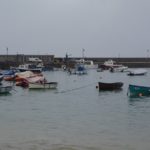




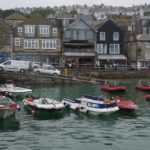




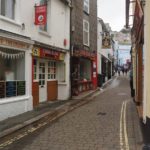


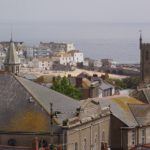








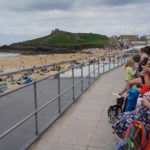



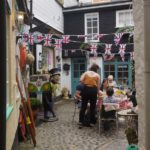

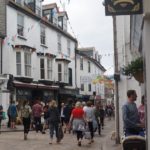


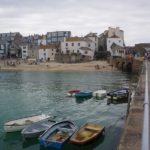


We are both well and are enjoying a nice sunny afternoon aftera wet morning . you both sound to be enjoying your walk.
You can see why the tourists would love it. I love the beaches. Also as you say the old buildings and the cobbled streets